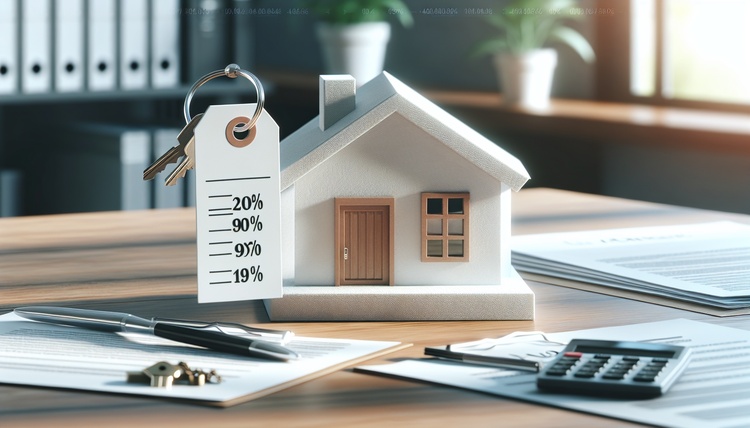Thinking About Two-Bedroom Living? Here’s What to Know
Considering a move to a two-bedroom home? Whether you're downsizing, starting a family, or seeking the perfect balance between space and affordability, this decision requires careful thought. Two-bedroom living offers unique advantages in terms of maintenance, cost, and versatility—but also comes with important considerations about privacy, storage, and future needs.

The decision to move into a two-bedroom home represents a significant lifestyle choice that balances practicality with personal needs. Whether you’re considering a prefabricated two-bedroom house, a traditional apartment, or a compact single-family home, understanding what this living arrangement entails will help you make an informed decision. Two-bedroom spaces offer versatility for various life stages while presenting unique considerations around space utilization, privacy, and long-term satisfaction.
Assessing If a Two-Bedroom Home Matches Your Lifestyle
Before committing to a two-bedroom living arrangement, evaluate how it aligns with your daily routines and priorities. For singles or couples, two bedrooms provide the perfect balance—one room for sleeping and another that can function as a home office, guest room, or hobby space. For small families, two bedrooms can work efficiently when children are young and willing to share a room. However, if you frequently host overnight guests or plan to expand your family, you might find the space restrictive over time.
Consider your work situation as well. With remote work becoming increasingly common, having a dedicated home office space is valuable. A two-bedroom setup allows you to maintain separation between work and personal life—a significant advantage for mental well-being and productivity. Additionally, assess your storage needs realistically; two-bedroom homes typically offer less closet and general storage space than larger alternatives.
Space and Privacy Differences: Apartments vs. Houses
Two-bedroom apartments and houses offer distinctly different living experiences, particularly regarding space configuration and privacy. In apartments, shared walls mean potential noise transfer from neighbors, and the overall square footage is typically more compact. However, many modern apartments maximize space efficiency with open floor plans and built-in storage solutions. Two-bedroom prefabricated homes often provide better sound insulation between rooms compared to apartments, creating more privacy despite the modest footprint.
Houses generally offer more breathing room, with separate entrances, possibly outdoor space, and greater distance between bedrooms. This layout provides enhanced privacy, especially important if you’re sharing the home with a roommate or older children. Houses may also include bonus spaces like attics, basements, or garages that apartments typically lack. However, this additional space comes with increased maintenance responsibilities and potentially higher costs.
Maintenance Considerations for Different Housing Types
Maintenance requirements vary significantly between two-bedroom apartments and houses. Apartment living typically includes maintenance services as part of monthly fees, with building staff handling repairs, landscaping, and sometimes even appliance replacements. This low-maintenance lifestyle appeals to busy professionals, frequent travelers, or those who prefer not to deal with home repair projects.
In contrast, two-bedroom houses—including prefabricated options—require owners to manage all aspects of maintenance, from lawn care to appliance repairs. While this provides greater control over your living environment, it also demands more time, skill, and financial resources. Prefabricated two-bedroom homes offer a middle ground, often featuring modern, efficient systems that require less maintenance than older conventional homes, along with warranties that cover structural elements for extended periods.
Location and Community Factors for Two-Bedroom Living
Location significantly impacts the two-bedroom living experience. In urban settings, two-bedroom apartments or compact houses may provide access to vibrant neighborhoods with amenities within walking distance. Suburban two-bedroom homes typically offer more square footage and yard space but might require longer commutes to work or entertainment. Rural two-bedroom properties can provide the most space and privacy but with reduced convenience to services.
Community amenities matter too. Many two-bedroom apartments come with access to pools, fitness centers, and community spaces that compensate for the smaller private living area. Two-bedroom prefabricated homes in planned communities might offer similar shared amenities. Consider how neighborhood characteristics align with your lifestyle—proximity to schools, parks, public transportation, and shopping can significantly enhance your satisfaction with a two-bedroom living arrangement.
Family Considerations and Long-Term Planning
When evaluating a two-bedroom home for family living, think beyond your current situation. For new or expecting parents, a two-bedroom setup works well initially, but as children grow, space needs evolve. Consider the flexibility of the space—can rooms be reconfigured as family dynamics change? Some prefabricated two-bedroom homes are designed with expansion possibilities, allowing for additions if your family grows.
Long-term financial planning also factors into the decision. A two-bedroom home typically costs less to purchase and maintain than larger alternatives, potentially allowing for investment in other life priorities. However, if you anticipate needing more space within a few years, the costs of moving might outweigh initial savings. For empty-nesters or retirees, two-bedroom living often provides the ideal balance of space for occasional family visits without the burden of maintaining unused rooms.
Cost Considerations and Housing Options
Two-bedroom living options vary widely in price depending on housing type, location, and amenities. Prefabricated two-bedroom homes have gained popularity for their cost efficiency compared to traditional construction, offering quality housing at lower price points. Below is a comparison of different two-bedroom housing options and their typical cost ranges:
| Housing Type | Average Price Range | Monthly Operating Costs | Key Cost Factors |
|---|---|---|---|
| Prefabricated Two-Bedroom Home | $80,000-$150,000 | $500-$800 | Land costs additional, faster construction timeline |
| Traditional Two-Bedroom House | $150,000-$400,000+ | $800-$1,500 | Location-dependent, higher maintenance costs |
| Two-Bedroom Apartment (Purchase) | $120,000-$500,000+ | $400-$1,000 | HOA fees, amenities included, urban premium |
| Two-Bedroom Apartment (Rent) | $800-$3,000/month | Included in rent | Location-dependent, utilities sometimes included |
| Two-Bedroom Townhouse | $120,000-$300,000 | $600-$1,200 | Middle ground between house and apartment |
Prices, rates, or cost estimates mentioned in this article are based on the latest available information but may change over time. Independent research is advised before making financial decisions.
Prefabricated two-bedroom homes offer particular value, with construction costs typically 10-25% lower than traditional building methods. These homes are factory-built under controlled conditions, resulting in less material waste and labor time. Additionally, their energy-efficient designs often lead to lower utility bills—an important consideration when calculating the total cost of ownership.
Making Your Final Decision
Ultimately, deciding on two-bedroom living involves balancing immediate needs with future possibilities. Start by honestly assessing your space requirements, considering both daily living and occasional needs like hosting guests. Visit different two-bedroom layouts to get a tangible sense of the space—what feels spacious to one person might feel cramped to another.
Consider creating a pros and cons list specific to your situation, weighing factors like location, price, maintenance requirements, and potential for appreciation. For many, the efficiency and affordability of two-bedroom living, particularly in well-designed prefabricated homes, provides the perfect balance of comfort and practicality. Whatever your decision, ensure it aligns with both your current lifestyle and reasonable projections for your needs over the next five to ten years.




